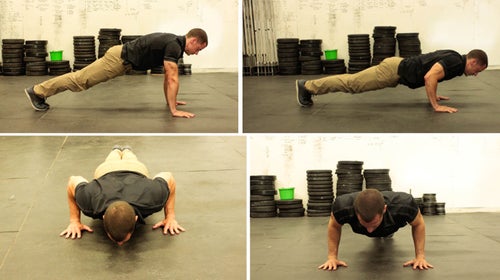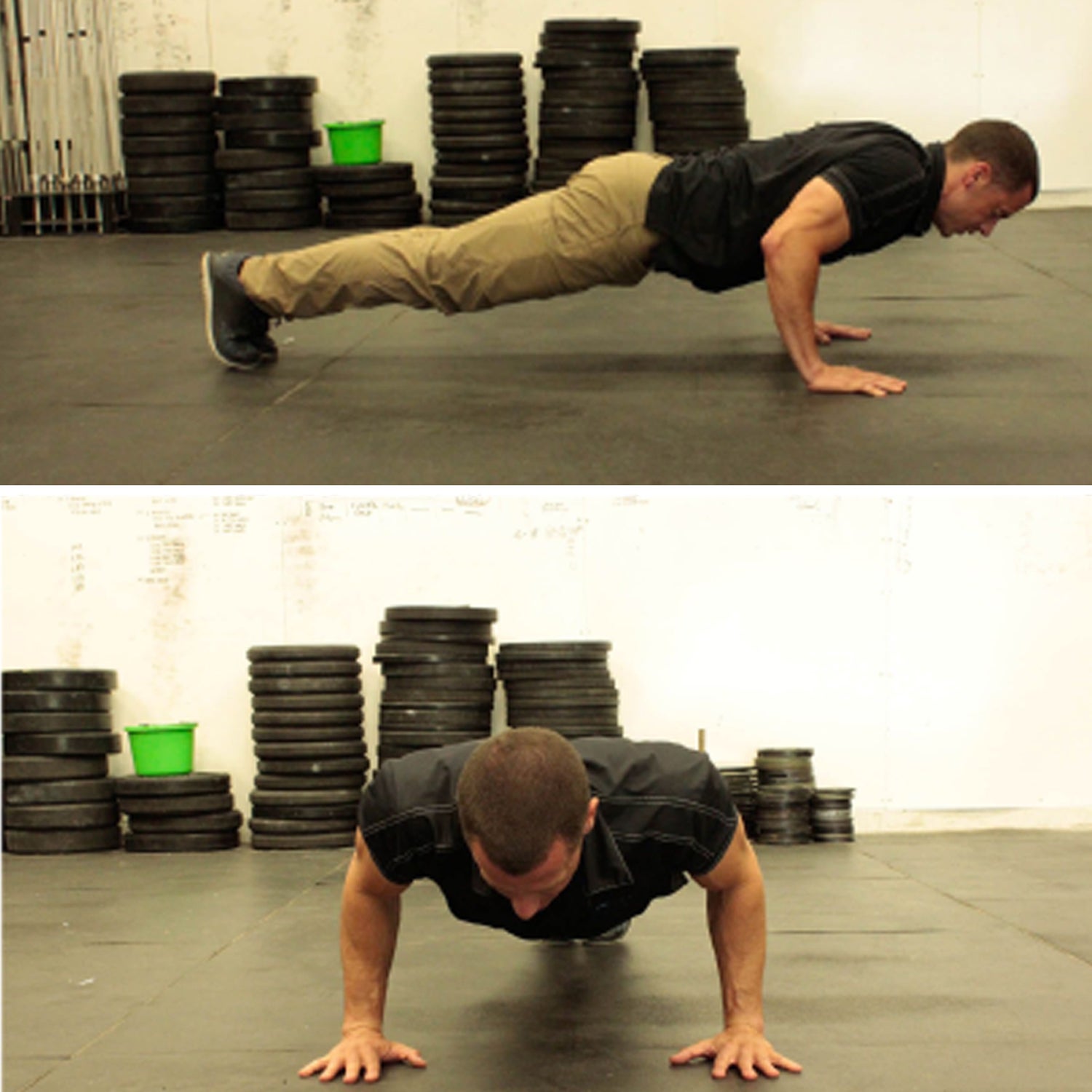According to strength and conditioning coach Adam Scott, a perfect push-up can challenge even the fittest athletes when done correctly, but can also be rendered completely useless when done wrong. And a lot of people do them wrong.
These are three most common mistakes Scott and his colleagues see, and their comprehensive guide to correcting them.
Mistake #1: Not Maintaining Correct Body Alignment
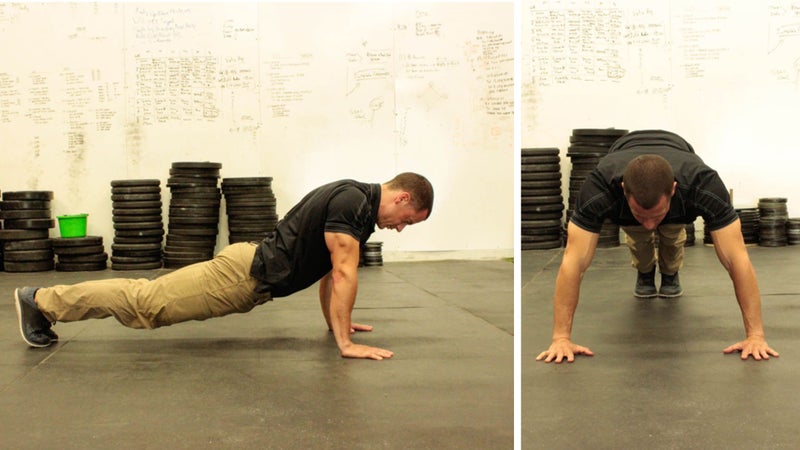
If you have a weak core, you’re going to have trouble maintaining proper body alignment during a push-up. This will either cause you to drop your hips to the floor, or you’ll overcompensate by pressing your weight back and diving your hips into the air is if you were pressing into a downward dog. Either way, you’ve broken your biomechanical chain which connects your upper and lower body. And trust us, the worms and headbobs you’ll be performing to execute the up-and-down motion of a pushup look more like bad dance moves than exercise.
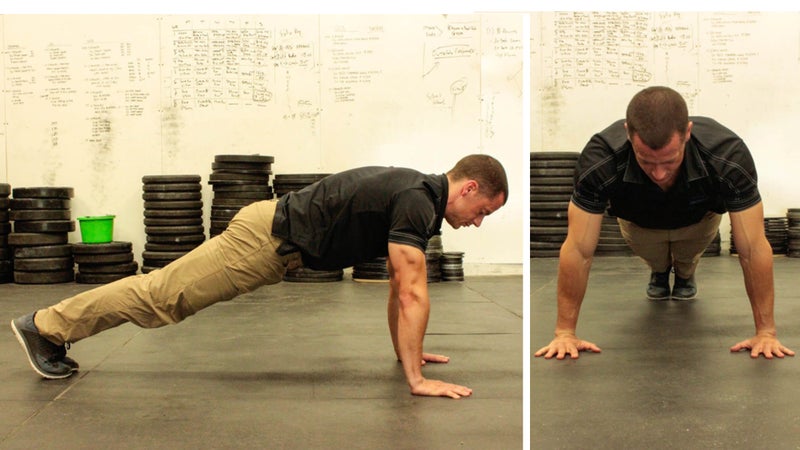
The correction: A correct push-up requires that you maintain rigid alignment from your heels to your hips and all the way to your shoulders—you should be able to draw a straight line from your ankle to the top of your head. “To teach this, isometric core training like simple plank exercises, is the best place to start,” says Scott. Once you can maintain proper alignment in a static position, then you can add small movements like lifting your hand of the ground, before moving on to a full push-up.
Mistake #2: Shrugged Shoulders and Wide Elbows
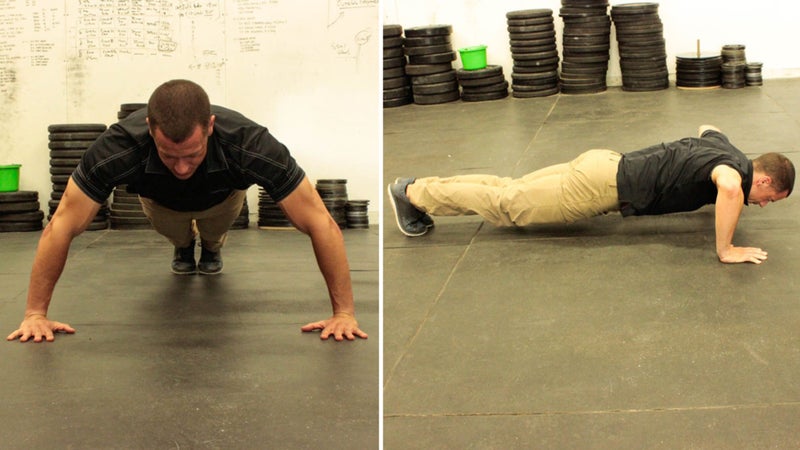
Many novice athletes place their hands way outside their shoulders and try to initiate movement with wide pushing motion. “They are convinced that a wider hand position will give them more strength and stability,” says Scott, “but this position actually does the opposite – wide hands and bowed elbows force you to shrug your shoulders and contort your elbows.” It’s a weaker variation and can also cause shoulder pain over time.
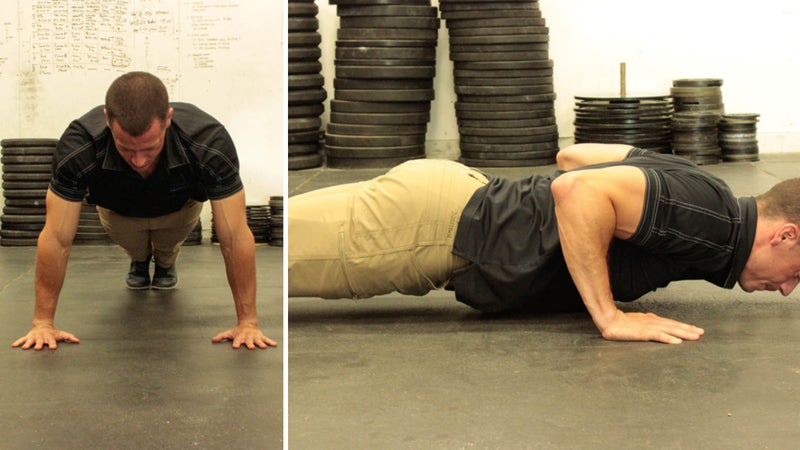
The correction: When performing a standard push-up you want to align the webbing of your thumbs with your shoulders. As you lower your body, sweep your elbows to your sides. “We watch closely for any shrugging of shoulders and instruct our athletes to keep as much distance between their ears and their shoulders as possible,” explains Scott. “You may not be able to perform as many push-ups in this alignment, but overtime you’ll be able to transfer much more strength through this motion.”
Note: There is such a thing as a “wide push-up” variation, but this is best attempted after you have mastered a standard push-up.
Mistake #3: Not Moving Through the Full Range of Motion
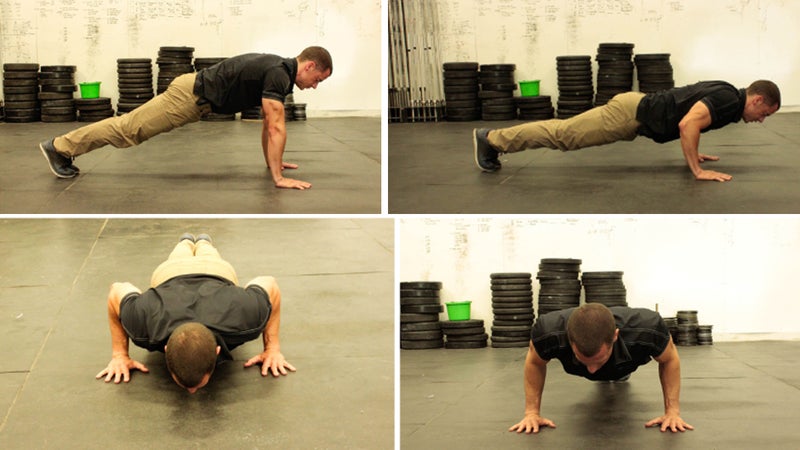
“Cheaters gonna cheat,” says Scott, “and when it comes to push-ups there are two kinds of cheaters—bottom-half and top-half.” According to Scott, if you’re a “top-half cheater” you’re usually weaker and don’t have the strength to recover after reaching the bottom portion of a repetition. Instead you stay high in the movement—typically between an arm angle of 180 degrees and 135 degrees. If you’re a “bottom-half cheater,” you’re likely strong enough to do a quality push-up, but you’re probably not as strong as you think. For this reason, you end up bouncing between 90 degrees and 135 degrees. “Unfortunately for you,” says Scott, “100 half push-ups equals 0 push-ups.”
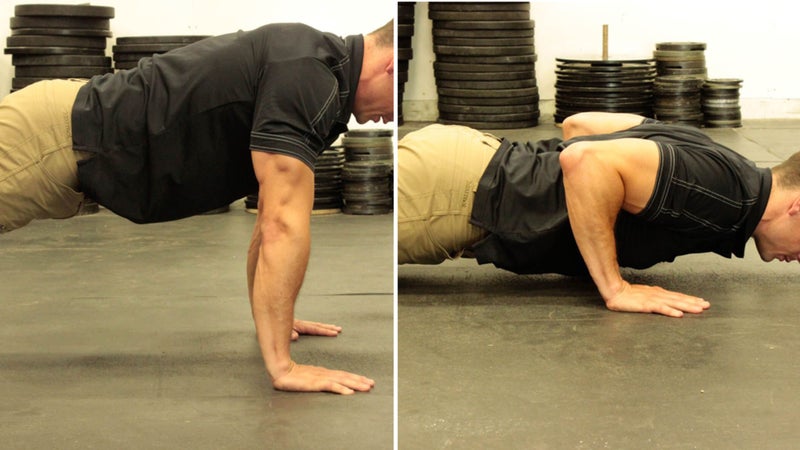
The correction: Always train in the full range of motion. This builds muscle memory and strength throughout the entire movement. “For push-ups this means arms fully extended in the up-position and either chest to the ground or shoulders below your elbows at the bottom-position (depending on the standard),” says Scott. “If you can’t quite complete the full range of motion, try going to your knees or elevate your hands until you have found a light enough position. Another, more advanced option, is to try hand release push-ups. Rest your chest on the ground and release your hands at the bottom of each repetition.
